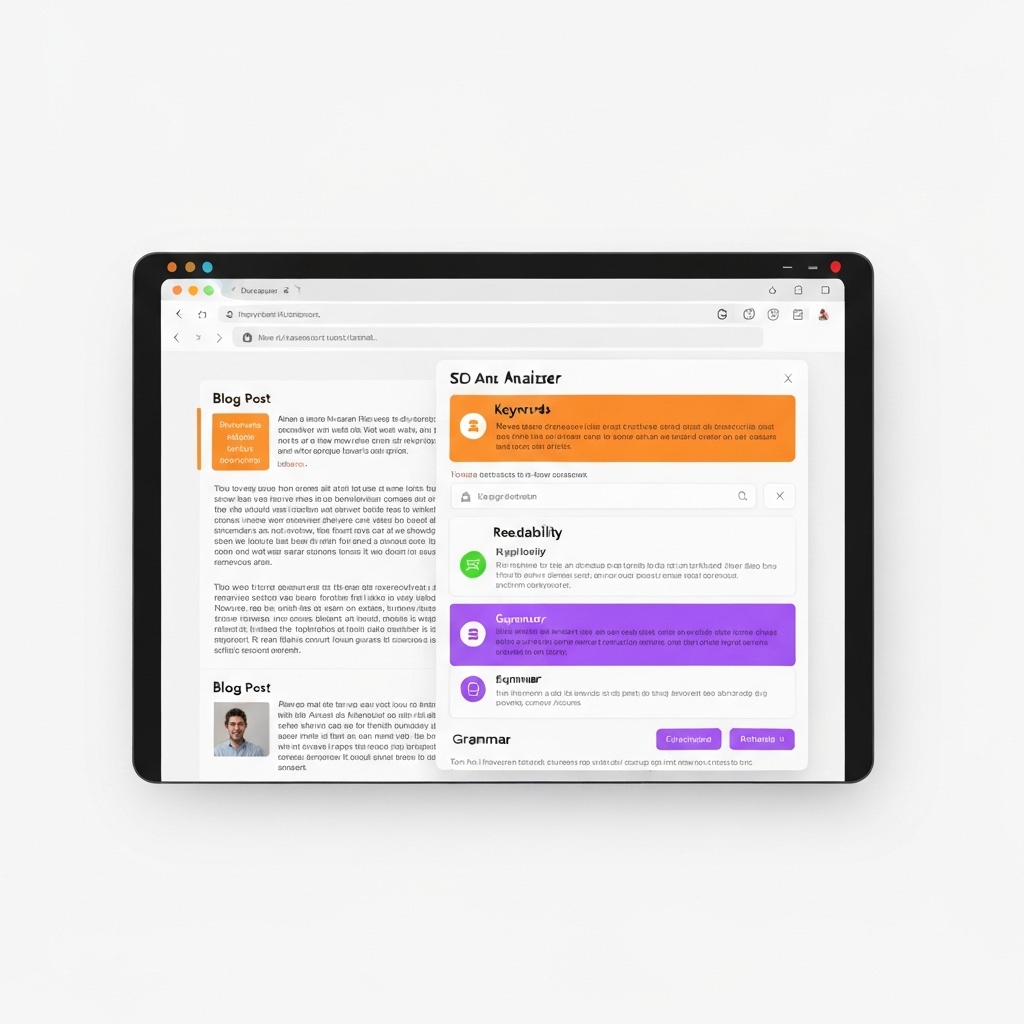How to Use AI for Writing Blog Posts: A Practical Guide for Content Creators
How to Use AI for Writing Blog Posts: A Practical Guide for Content Creators
Artificial Intelligence is revolutionizing content creation by offering tools that assist writers from ideation to final editing. With AI-powered platforms like Grammarly and Jasper, bloggers can generate topic suggestions, outline structures, and even draft full articles based on simple prompts. These tools analyze vast datasets to recommend trending topics and optimize content for readability and SEO, helping creators stay relevant in competitive digital spaces.
One of the biggest advantages of using AI in blog writing is time efficiency. Instead of spending hours brainstorming or rewriting sentences, AI can produce coherent first drafts in minutes. This allows writers to focus more on refining tone, adding personal insights, and ensuring authenticity—elements that resonate with readers and cannot be fully replicated by machines. By handling repetitive tasks, AI frees up creative energy for higher-level thinking and storytelling.
However, maintaining a human touch remains essential. While AI can mimic natural language, it lacks lived experience and emotional nuance. Successful blog writers use AI as a collaborative partner rather than a replacement—leveraging its speed and data-processing power while injecting their unique voice and perspective into the final piece. This balance ensures content feels both polished and genuine.
To get the most out of AI writing tools, it's important to provide clear, detailed prompts and to review generated content critically. Fact-checking, updating outdated information, and aligning the message with audience expectations are crucial steps. Reputable resources like HubSpot Blog offer guidance on integrating AI responsibly into content workflows, ensuring quality and credibility remain top priorities.
Step 1: Generate Blog Ideas with AI
Coming up with original and compelling blog topics consistently can be a major hurdle for writers, especially in saturated niches. Fortunately, AI-powered idea generators are transforming the creative process by analyzing vast amounts of trending content, search patterns, and audience behavior to identify what people are actively engaging with. These tools use machine learning algorithms to detect emerging themes and popular queries, helping writers stay ahead of the curve. By leveraging real-time data, AI not only sparks inspiration but also increases the likelihood that content will resonate with readers.
To get started, writers simply input a keyword or niche—such as "sustainable fashion" or "remote work productivity"—and the AI generates a curated list of potential blog titles tailored to current interests. These suggestions often include long-tail keywords and question-based headlines that align well with SEO best practices. Platforms like Google Trends and AnswerThePublic complement AI tools by visualizing public search queries, offering deeper insight into user intent. This synergy between human creativity and artificial intelligence streamlines brainstorming and enhances content relevance.
Beyond just generating titles, some AI tools provide brief outlines or highlight key subtopics that should be covered, making it easier to structure articles effectively. This level of guidance is particularly useful for writers facing creative blocks or tight deadlines. Additionally, because the suggestions are based on actual audience engagement data, they increase the chances of higher click-through rates and improved organic reach. Over time, using these tools can also help writers better understand their audience’s evolving preferences.
While AI idea generators don’t replace the writer’s voice or expertise, they serve as powerful collaborators in the content creation workflow. They shift the focus from guessing what might perform well to creating informed, data-driven content that meets reader demand. As AI technology continues to evolve, its role in ideation will likely become even more nuanced, offering predictive insights and personalized recommendations. For modern bloggers and content creators, embracing these tools is a strategic step toward sustained relevance and growth. Learn more about content trends at HubSpot Blog.

Step 2: Use AI to Create an Outline
Creating a well-structured blog post begins with a solid outline, and AI tools can significantly streamline this process. By analyzing top-ranking content on your chosen topic, AI can identify common themes, frequently covered subtopics, and optimal content flow. This data-driven approach ensures that your article aligns with what readers and search engines already value, increasing its chances of ranking well on platforms like Google.
AI-powered outlining goes beyond simple suggestions—it can recommend logical section breaks, effective subheadings, and even key points you might have overlooked. For instance, if you're writing about sustainable gardening, AI might highlight the importance of including sections on composting, water conservation, and native plant selection based on patterns in high-performing articles from authoritative sources like the U.S. Environmental Protection Agency.
These insights help you craft a comprehensive post that addresses user intent thoroughly. Instead of relying solely on intuition, you’re equipped with actionable guidance derived from real-world performance data. Tools like Surfer SEO or Clearscope use AI to analyze content structure and keyword usage, offering recommendations tailored to your topic.
Ultimately, leveraging AI for outlining not only saves time but also enhances the quality and relevance of your content. It bridges the gap between research and writing, allowing you to focus on crafting engaging, informative paragraphs while ensuring your structure supports discoverability and reader satisfaction.
Step 3: Draft Content with AI Assistance
AI writing assistants have become invaluable tools for content creators looking to streamline their workflow. By analyzing simple prompts, these tools can generate full paragraphs or even complete sections of an article, offering a solid foundation to build upon. Whether you're drafting a blog post, crafting marketing copy, or outlining a research piece, AI can significantly reduce the time spent on initial composition. This efficiency allows writers to focus more on refining ideas and ensuring accuracy rather than struggling with blank-page syndrome.
While AI-generated text is often coherent and well-structured, it's important to remember that these tools are designed to assist, not replace, the human touch. Your unique voice, perspective, and expertise are what make your content authentic and engaging. Think of AI as a collaborative partner—one that drafts the skeleton of your content so you can breathe life into it through editing and personalization. Adjusting tone, adding anecdotes, and fine-tuning style ensures the final output resonates with your intended audience.
Many popular AI writing platforms, such as Grammarly and Jasper, offer customizable settings to match different writing styles and goals. These tools leverage advanced language models trained on vast datasets, enabling them to produce contextually relevant suggestions. However, always review AI-generated content critically, checking for factual accuracy and originality, especially when covering technical or sensitive topics.
Ultimately, the strength of AI writing assistants lies in their ability to enhance productivity without compromising creativity. When used thoughtfully, they empower writers to produce high-quality content more efficiently. For those looking to explore the capabilities of AI in writing, resources like OpenAI provide insights into how language models work and how they can be applied responsibly across various writing tasks.

Step 4: Optimize for SEO and Readability
Many modern AI writing tools integrate advanced SEO and readability analysis to help creators optimize their content effectively. These tools scan your draft and provide actionable suggestions such as ideal keyword placement, meta description length, and header structure—all critical factors for improving search engine rankings. By aligning your content with SEO best practices, you increase the likelihood of your article being discovered by both search engines and readers.
Readability features often evaluate sentence length, paragraph structure, and vocabulary complexity to ensure your content is accessible to a broad audience. For instance, tools may recommend simplifying jargon or breaking up long sentences to improve comprehension, which can significantly boost reader engagement. Google's SEO Starter Guide emphasizes readability as a key component of user-friendly content, reinforcing the value of these AI-driven insights.
In addition to on-page elements, some AI platforms analyze competitor content and suggest relevant keywords based on current search trends. This competitive intelligence allows writers to tailor their messaging to fill content gaps and address popular queries. Tools like Yoast SEO and Clearscope use similar methodologies, helping content creators meet both algorithmic and human reader expectations.
By leveraging AI-powered recommendations before publishing, you can fine-tune your articles for maximum visibility and impact. These insights bridge the gap between creative writing and technical optimization, empowering bloggers and marketers to produce high-quality content efficiently. For more on how readability affects SEO, check out resources from Moz’s Beginner’s Guide to SEO.

Step 5: Edit and Humanize the Final Draft
While AI-generated content can be coherent and informative, it often misses the nuanced emotional resonance that comes from lived experience. Without personal stories or genuine sentiment, readers may perceive the text as detached or impersonal. This is where your unique voice becomes essential—by revising AI output to include your own reflections, challenges, and insights, you transform generic information into something relatable and authentic.
Incorporating anecdotes not only humanizes your writing but also strengthens the connection with your audience. People are more likely to trust content that feels honest and grounded in real-life context. Whether it's sharing a lesson learned from a past mistake or describing how a particular strategy changed your approach, these details add depth that algorithms simply can't replicate.
Think of AI as a first draft assistant rather than a final authority. Use its structure and suggestions as a foundation, then build upon it with your expertise and personality. As emphasized by Content Marketing Institute, authenticity consistently ranks among the top factors influencing audience engagement and brand loyalty.
Ultimately, the goal is to balance efficiency with sincerity. By taking the time to infuse your content with genuine perspective, you ensure it resonates more deeply with readers. This human-centered approach not only sets your work apart but also fosters long-term trust—an invaluable asset in any digital space.
Conclusion: Embrace AI as a Creative Partner
AI is not here to replace writers but to empower them. By integrating intelligent tools into the blogging workflow, creators can streamline tasks like research, drafting, and editing—freeing up valuable time to focus on what truly matters: crafting compelling narratives and building authentic connections with their audience. From suggesting headlines to optimizing SEO, AI acts as a collaborative partner that enhances creativity rather than overshadowing it. Platforms like Grammarly and Jasper exemplify how AI can support tone consistency and clarity without compromising individual voice.
One of the most significant benefits of using AI in content creation is overcoming writer’s block. Staring at a blank page becomes less daunting when AI generates topic ideas or outlines based on trending searches and audience interests. Tools such as AnswerThePublic help uncover real questions people are asking, enabling writers to produce relevant, audience-focused content efficiently. This data-driven insight ensures that blogs remain both engaging and discoverable, bridging the gap between inspiration and execution.
Consistency is another area where AI proves invaluable. Maintaining a regular publishing schedule can be challenging, especially for solo bloggers or small teams. AI-powered editorial calendars and content schedulers like Buffer or HubSpot help automate planning and distribution, ensuring content reaches audiences at optimal times. These tools don’t just save time—they create space for strategic thinking and long-term growth.
Ultimately, the most successful blogs will be those where human creativity leads and AI assists. While algorithms can process data and suggest improvements, they can’t replicate personal experience, emotion, or unique insight. The key is to use AI wisely—leveraging its strengths while keeping your distinct perspective at the heart of every post. When used this way, AI doesn’t dilute authenticity; it amplifies it.
